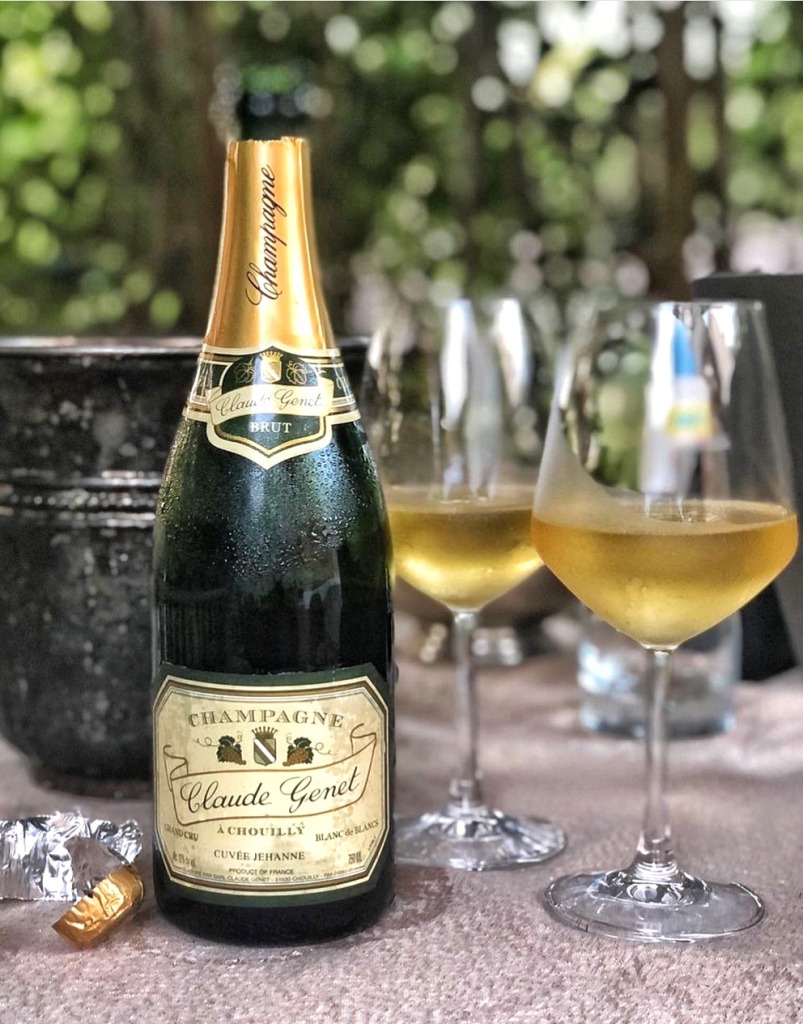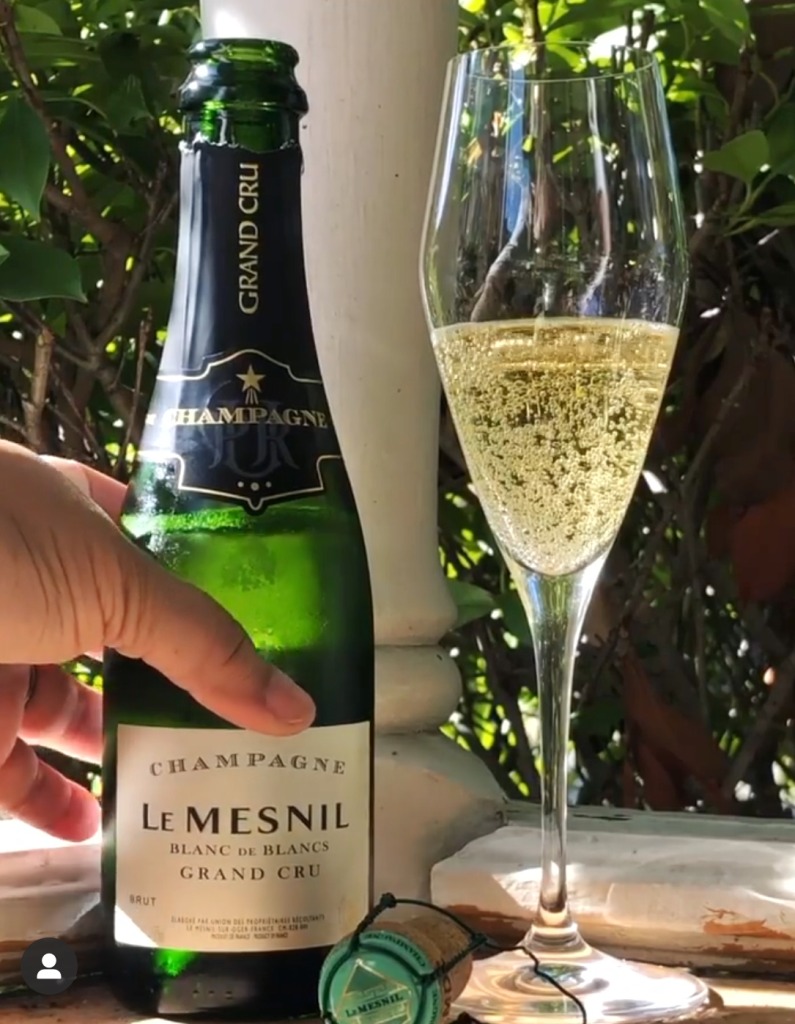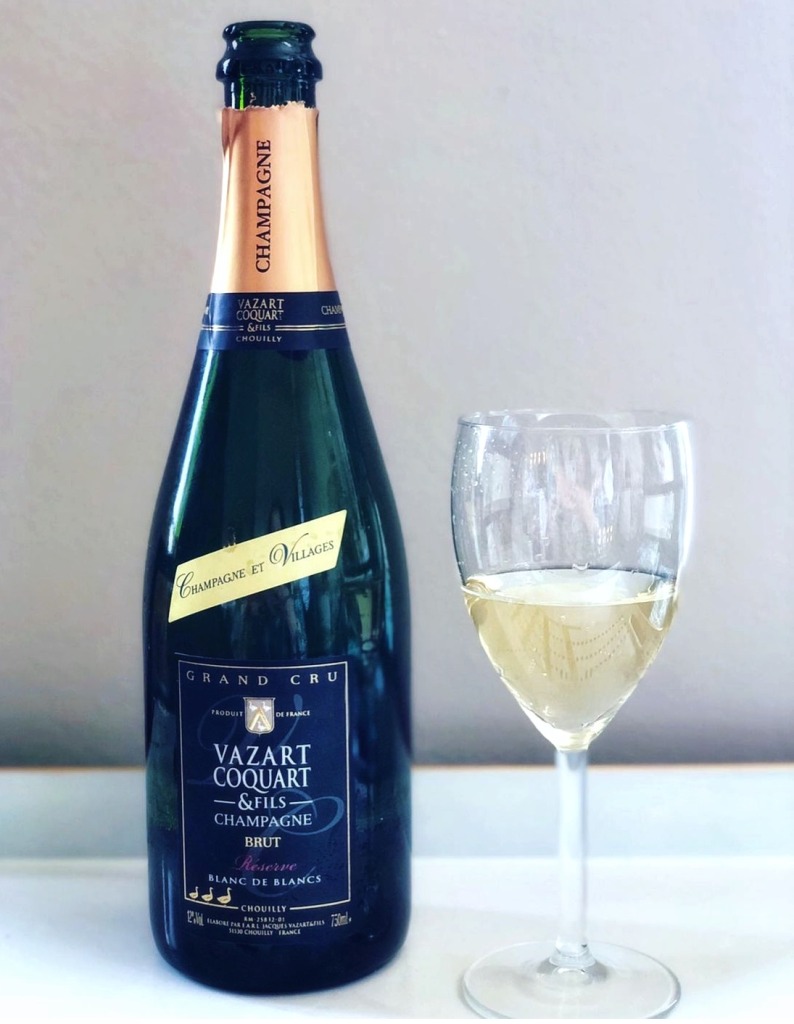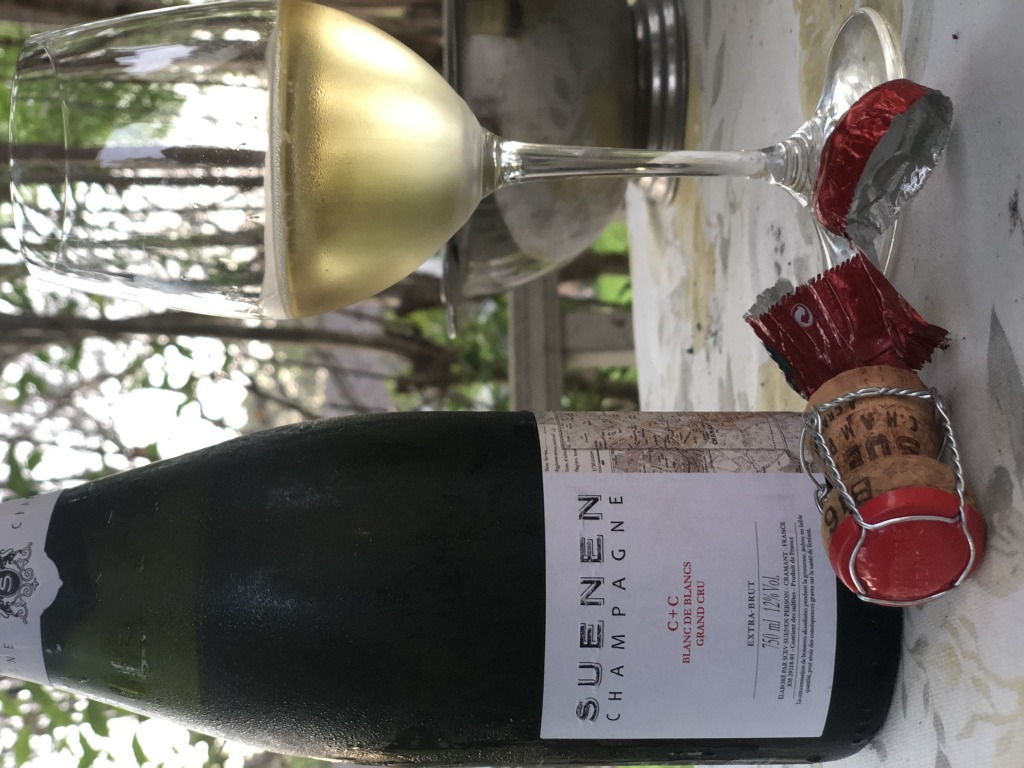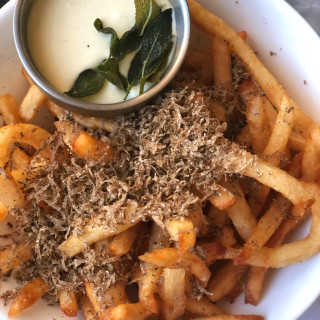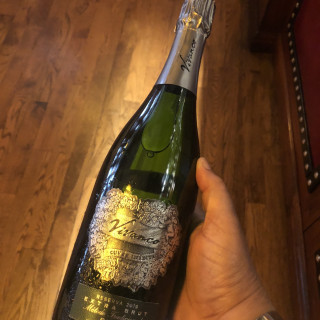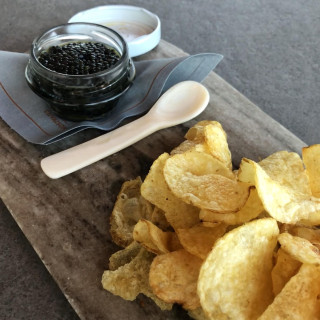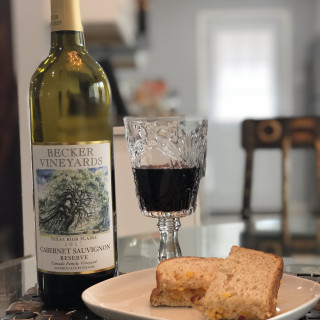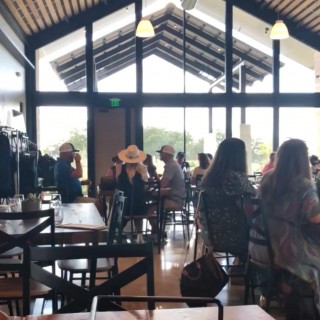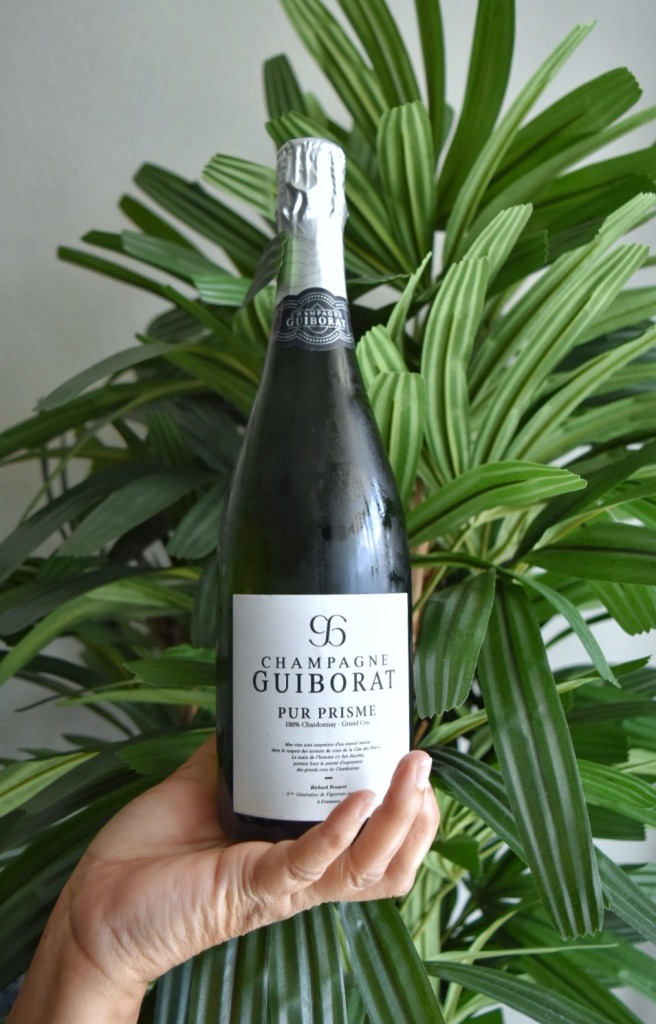 Just when you sobered up from International Wine Day a couple of days ago, here comes International Chardonnay Day!
Just when you sobered up from International Wine Day a couple of days ago, here comes International Chardonnay Day!
One of the things I love most about Chardonnay is the many expressions the grape can exhibit depending on the area the grape was grown (the soil), the gr0wing conditions (the weather), and, of course, the skillful hands of the winemaker. Chardonnay flavor profiles can present as light-bodied, intense, oaked, unoaked, minerally, lean, bone dry, rich, tropical, or a combination of those characteristics.
When it comes to Chardonnay with regards to champagne, the Chard experience typically brings wonderful brightness, freshness and acidity, elegance, and ageability, which is naturally intensified with 100% Chardonnay Blanc de Blancs champagne.
There are tons of incredibly spectacular, well known Blanc de Blancs out there–Ruinart, Taittinger Comtes, Perrier-Jouët, Charles Heidsieck Blanc des Millénaires all instantly come to mind–but when it comes to champagne y’all know I’m also always on the hunt for new-to-me producers, unique styles, and champagne palate adventures. So, in honor of #internationalchardonnayday, I’m starting a new round-up series sharing some of my latest fave, fab discoveries through the use of an[other, lol] original, branded hashtag, #MyFiveFaveFinds!
That said, I’m going to kick things off with sharing 5 of my fave Blanc de Blancs *finds* that are bottles, brands or producers that may be under the radar with the hopes that you can discover something new-to-you to have a champagne palate adventure of your own. Y’all ready? LET’S GO!
1.) Champagne Guiborat Pur Prisme Blanc des Blancs Grand Cru
I’d never heard of nor seen this producer before a fortuitous trip to New Orleans last year at one of my fave wine shops not too far from the French Quarters. Currently helmed by Richard Fouquet (called “A young viticulteur among the most talented and engaged in the Côtes du Blanc…” by Michel Bettane, French wine critic) who is the 5th generation vigneron making récoltant manipulant (“farmer fizz”) champagnes at this 8 hectare family Domaine created in 1885, Champagne Guiborat has vineyards in in the Cote de Blancs and Marne near Epernay.
The Domaine employs organic farming practices with Chardonnay grapes from 4 parcels in Grand Cru villages and vineyards that are “deep chalk of Cramant and Chouilly” in the Cote de Blancs. Farming is all done by hand, with aggressive pruning and low yields.
Still wondering about the quality of the pedigree of these grapes? Well almost 3/4 of the production is sold to Laurent-Perrier—but the Domaine still keeps some of the best parcels to make their own champagne. This Blanc des Blancs Grand Cru spends 30 months sur latte with a additional post-disgorgement minimum of 6 months in bottle before release, flaunting a 0g/l dosage.
If you’re as lucky as I am to stumble across a bottle then snatch it up because an average year only sees a about 2,500 cases produced!
NOSE: Luscious ripe pear with pretty white florals, zesty citrus, and a flinty, stone-ish note.
PALATE: Oh my gosh. Luscious acidity and citrus flavors that mimic the nose with grapefruit and lemon zest rounded out with toasted bread, toasted almonds, and a pretty caramelized note. So. Good!
2.) Champagne Claude Genet
Shout out to the the farmers-turned-winemakers and the good Lord above for the optimal growing conditions that made this #growerchampagne moment possible. Claude Genet {@champagne_claudegenet} #blancddblancs is a light to medium minus bodied, delicate champagne that is simple, yet still elegant.
NOSE: crunchy green nectarines; mild yellow apples; toasted nuts; and a delicate whisp of notes of dried pineapple that came to the party after the wine had gotten a little air.
PALATE: buttery puff pastry; honey drizzled Granny Smith apples; and lime citrus notes. It had soft but very present acidity that hit mid and sides of palate, but interestingly underneath the tongue the acidity is noticeably muted.
Still wondering whether this wine is one worth seeking out? Well maybe this #funfact will convince you: New York City Michelin starred @ElevenMadisonPark loves it so much that they regard the Claude Genet as the “house champagne.” So, if it’s good enough to be #BubbleistaApproved AND paired with #michelinstar food, then…
This super lovely, small production, “artisanal” champagne rings in under $60. It was the only bottle I had, but it was such an easy pleasure to drink that I definitely plan to hunt down more!
3.) Le Mesnil Blanc De Blancs NV
Le Mesnil Blanc De Blancs NV Grand Cru is aged for a minimum of 3 years and is described as “seductive and complex” which is “reflective of the [Les Mesnil] house style.”
First a little background on the #ChampagneMaison itself: 100% of the vineyards of the village of Le Mesnil sur Oger {which is situated in the heart of the prestigious Cote des Blancs} are ranked as #GrandCru and is a highly regarded vineyard in Champagne.
Now that we’re down with the terroir lesson, let’s talk tasting impressions!
NOSE: Yeasty, fresh baked bread notes; lemony citrus; delicate fresh red apple
PALATE: Is there such a thing as “fresh minerality?” If so, this champagne has got it in delicious spades. A 1st sip reveals that minerality plus delicate, lightly buttered biscuits; juicy, mouthwatering grapefruit. A 2nd sip shows added layers of crunchy, tart, slightly under ripe peach and fresh green pears.
Rich and creamy with a lasting finish, this charming bubbly drinks above its price of $40.00 and makes for mighty #finedrinking, y’all.
4.) Vazart Coquart Extra-Brut NV
FUN FACT: a unique aspect of the @champagnevazartcoquart is its “mono cru” status, meaning that ALL of the grapes used are solely from a singular grand cru village, in this case the village of Chouilly. #themoreyouknow
BLEND & BACKGROUND:
With it being a Blanc de Blanc it (of course) is 100% Chardonnay—but Vazart wants consumers to know how passionate they are about wine making, so they share lots more than the typical info about their “wine blend” on the Blanc de Blancs:
65% of the wine is from harvest 2014
5% harvest 2013
5% harvest 2012
and 25% of it is their perpetual reserve (also know as a “solera”) which was started in 1978 and is renewed each year with 40% of new harvest’s first juices)
In other words, there’s beautiful history and a “sense of place” in every single sip. ♥️
NOSE: it’s redolent of citrus—both lemon and lime notes + delicate white florals
PALATE: Green fruit predominates at first sip with ripe green pears and green melon notes. That’s followed by grapefruit, lemon curd, hazelnuts, and chalky minerality that round out this lighter bodied bubbly.
Although I drank this alone, I once had a dish comprised of tuna sashimi in a lemony aguachile topped with toasted hazelnuts, thin slivers of Cara Cara oranges, and figs and that was THE perfect pairing idea that immediately came to mind while drinking this champagne. Scallops or a poached white fish in a light citrus sauce would be perfect, too!
Rings in at around $50, so it perhaps it is a tiny bit of a splurge for a regular, everyday sip, but worth it for a unique, fun-to-drink, mid-week pick me up—especially for my #chardonnaylovers out there.
5.) Suenen Champagne
After picking up a bottle several months ago, I finally took @suenenchampagne “C + C” Grand Cru Blanc de Blancs #champagne for a spin—and it was a FUN ride! What was particularly exciting about this champagne is that it’s a single vineyard wine from the Oiry village in the Côte de Blancs. Côte de Blancs is renowned for producing Chardonnay possessing feisty acidity and chalky minerality, so if you are armed with this kind of knowledge it enables you to make a good educated guess at what a wine might taste like. #wineknowledgeispower
NOSE: All-on yellow, red, green, and apple orchard notes; lemon zest; some rich baking spice notes and minerality.
PALATE: Super full mouthfeel on the mousse—as if it were expanding in volume on my tongue; full lemon and grapefruit citrus; initially austere on the fruit in a very defined and focused manner; roasted almonds; both yeasty bread dough and baked bread notes; that vibrant chalky minerality; faint secondary note of barely there pear; and zesty, juicy acidity that leaves a tingle underneath the tongue.
With a little time and air the wine got more rounded with fruit and wonderfully generous on the palate. Although it got a touch softer, the acid remained very nice and racy!
